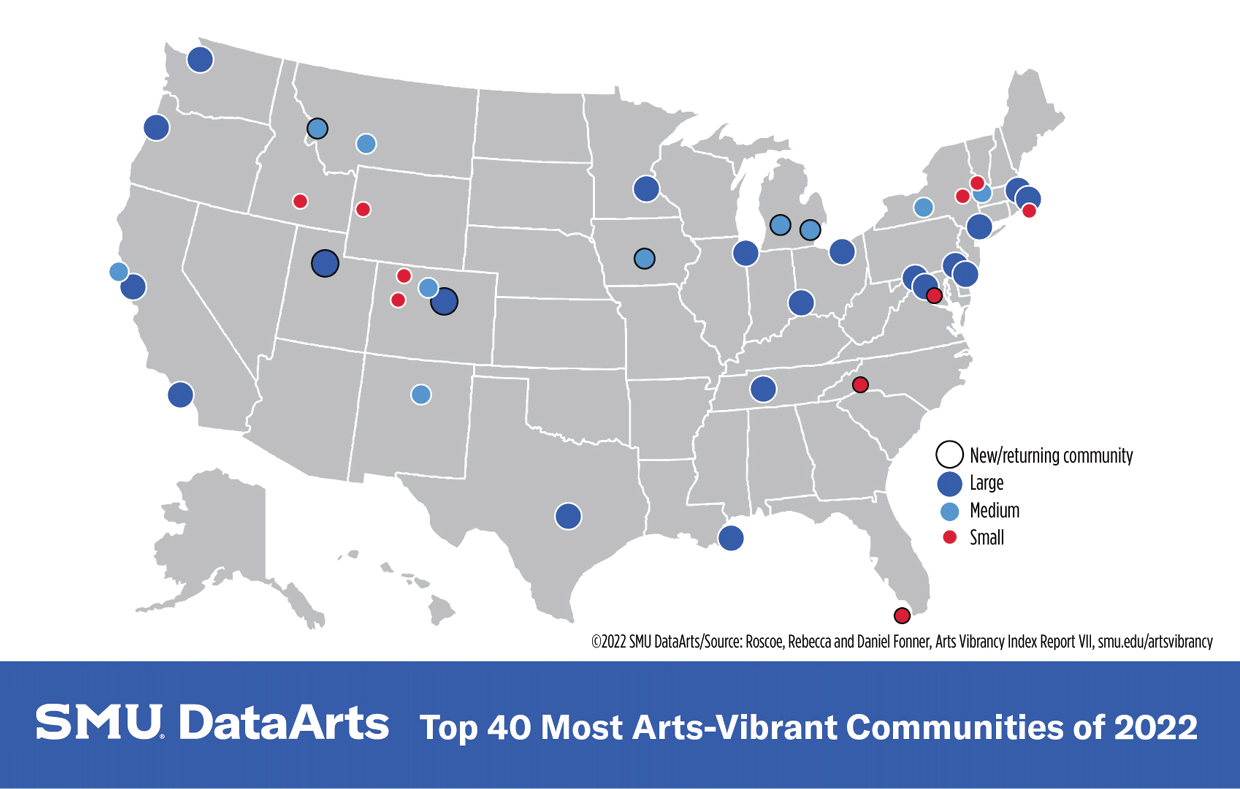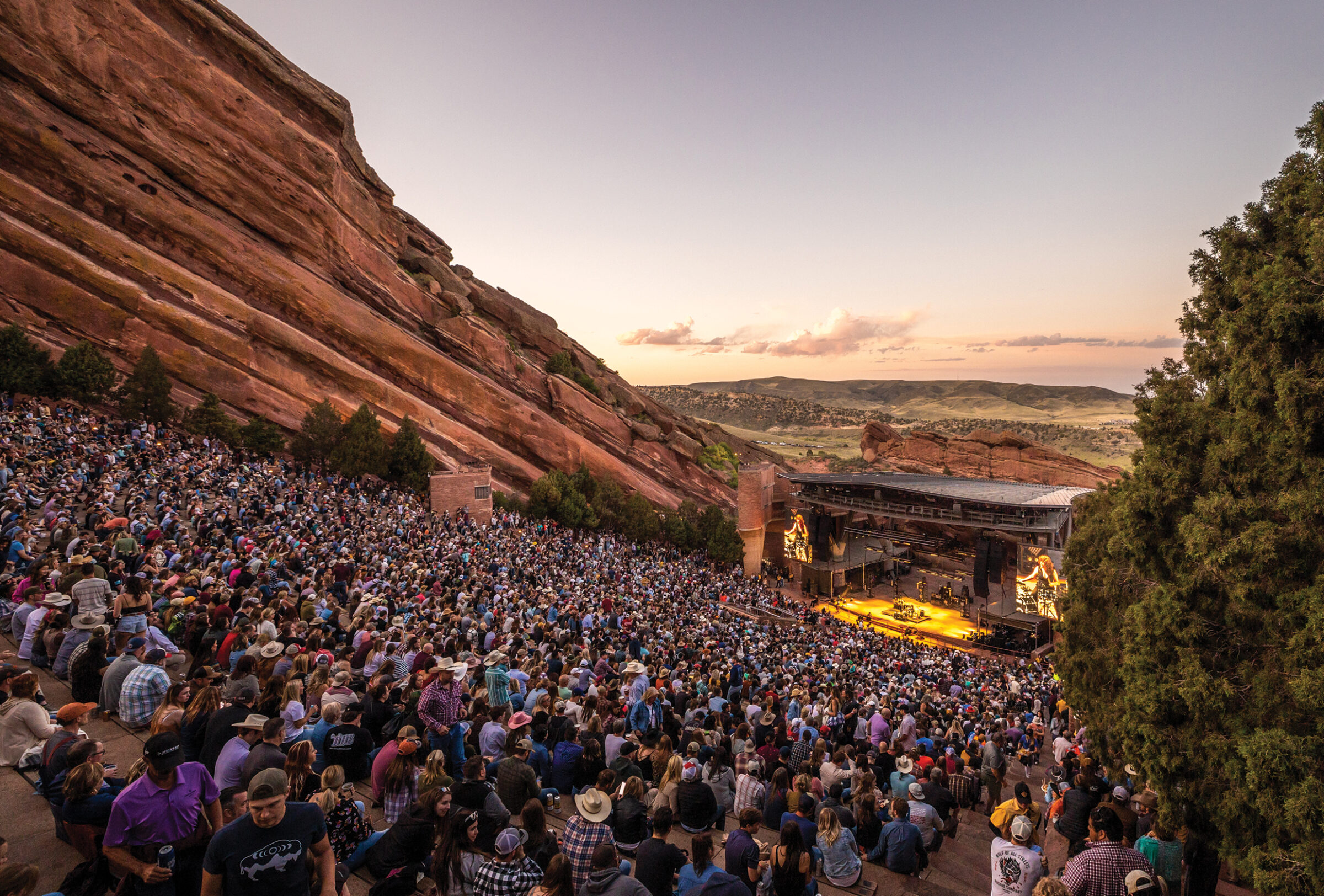The 2022 Arts Vibrancy Index, released in December 2022 by SMU DataArts, the National Center for Arts Research, found that the cultural capitals of California and New York each had three of the top 40 most arts-vibrant communities in the nation.
Colorado had four.
Not only was Colorado the only state to achieve that number, but its showcased communities spanned every size: Metro Denver in the large category, Boulder in the medium category, and Glenwood Springs and Steamboat Springs in the small community category. Boulder was No. 7 in arts providers. Steamboat Springs was No. 5 in that category among small towns, No. 2 in overall government support and No. 1 in arts and culture organizations when compared to the hundreds of micropolitan areas across the country.
Maybe it shouldn’t be a surprise: The U.S. Bureau of Economic Analysis reports that in 2020, arts and cultural production accounted for $14.4 billion and contributed 97,408 jobs in Colorado, which is more than in mining or transportation.
“The return on an investment in the arts is a community that pulsates with life, vigor, and activity,” said Dr. Zannie Voss, director of SMU DataArts.
Nowhere is that more true than in the Yampa Valley community of Steamboat Springs, a designated Creative Arts District — one of 30 in the state — where the area arts council, now known as Steamboat Creates, is celebrating its 50th anniversary. Cultivating creatives is no passing fad in Steamboat and Routt County. It’s a way of life that complements the area’s strong outdoor recreation sector and entrepreneurial bent.
Two of those strands came together in 2021 when Routt County was added to the Office of Economic Development and International Trade’s (OEDIT) Location Neutral Employment Incentive program, which provides incentives to approved companies relocating to Colorado to hire location-neutral workers in approved counties. At the same time, the Steamboat Springs Film Committee successfully moved to Steamboat Creates, allowing for better alignment locally as well as with the Colorado Office of Film, TV and Media.
The state’s profile in film, TV and media indeed is growing in stature: The most recent figures provided by the Motion Picture Association indicate the motion picture and television industry in Colorado is directly responsible for more than 17,140 jobs and $1.63 billion in wages. In 2020 the state hosted one film and four TV series, followed by five productions in each category in 2021. Colorado’s incentives for production include a 20% rebate on qualifying in-state expenditures, provided 50% of the cast and crew are Colorado residents.
The state says Colorado film incentives have generated $116.6 million in economic impact in 55 counties in Colorado and more than 3,700 cast and crew positions alone.
Denver’s $16-billion Gold Mine
Denver’s creative industries range from the performances by multiple institutions at its eye-catching Arts Complex to its thriving architecture and creative technology sectors. The “2020 City of Denver Creative Economy Report with Initial Impacts of the COVID-19 Crisis” from Denver Arts & Venues found the Denver metro region’s creative industries support 96,358 jobs. “Employment in the region’s creative industries grew by 29% between 2010 and 2019 with an addition of 21,546 jobs,” said the report.
Denver’s creative industries produced $16.2 billion in sales of goods and services in 2019, representing 4% of all goods and services sold within the region. All of those industries fall under the purview of Colorado Creative Industries (CCI), a division of OEDIT that supports the creative economy subgroups of design, film and media, literary and publishing, performing arts, visual arts and design, and heritage.
CCI in September 2022 awarded 121 grants totaling more than $834,000 to arts organizations and communities across 28 counties as part of its Colorado Creates Grant Program. A total of 46% of grant funds went to rural communities.
Organizations in the communities saluted by SMU DataArts’ national rankings who received CCI grants included the Colorado New Play Festival, Steamboat Symphony Orchestra and Yampa Valley Choral Society in Routt County; the Carbondale Clay Center and Roaring Fork Music Society in Garfield County (Glenwood Springs); 17 groups including the NoBo Arts District, Stories on Stage and Colorado MahlerFest in Boulder; and 26 organizations in Denver County including the Colorado Photographic Arts Center, Education Through Music-Colorado, the Denver Architecture Foundation and Warm Cookies of the Revolution.

Credit: SMU DataArts
What, you may ask, is that last one all about? Warm Cookies is a decade-old nonprofit that calls itself “the world’s first civic health club,” created a decade ago by Buntport Theater company leader and civic activist Evan Weissman in order to engage community members in “crucial civic issues by creating innovative and fun arts and cultural programs.” (Buntport was another organization to earn a CCI grant.)
It’s just one more example of how citizenship, the arts, economic development and lifestyle blend on the vibrant canvas that is Colorado.
“The economic impact of Colorado’s creative industries is profound, representing 3.8 percent of the state’s GDP,” says Christy Costello, interim director of Colorado Creative Industries. “In addition to the economic impacts, research links arts and culture to positive long-term social impacts. The four Colorado communities on the arts vibrancy index demonstrate a bold commitment to investing in and supporting the arts as a way to nurture places where people want to live, work and visit.”

